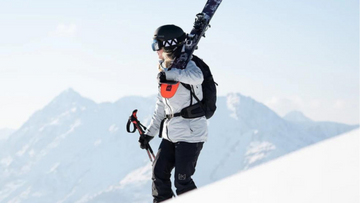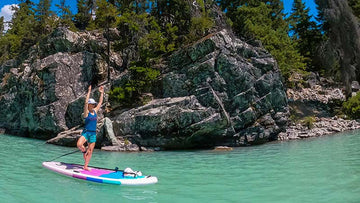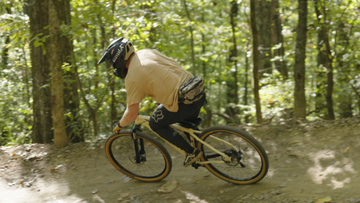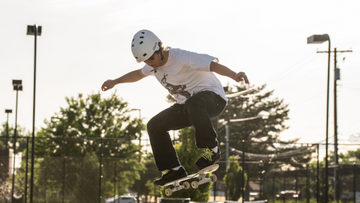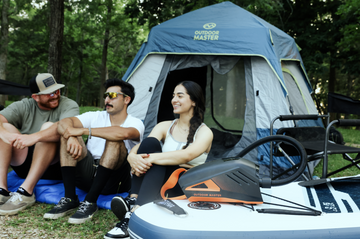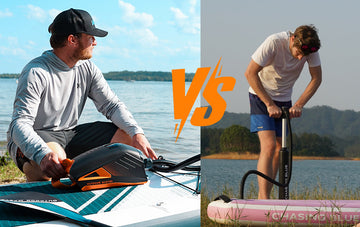Beginner’s Guide to Backcountry Skiing and Snowboarding
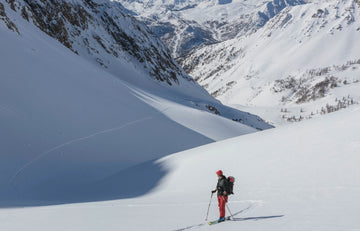
Photo by Go Montgenevre on Unsplash
If you’ve ever looked beyond the ski resort and dreamed of carving through untouched powder in complete solitude, backcountry skiing and snowboarding might be for you. But unlike resort riding, venturing into the backcountry requires extra preparation, knowledge, and gear to stay safe.
This beginner’s guide will cover the basics—what backcountry skiing and snowboarding are, the essential gear you’ll need, safety tips, and how to get started.
What is Backcountry Skiing and Snowboarding?
Backcountry skiing and snowboarding take place outside of resort boundaries, in ungroomed and uncontrolled terrain. Unlike at a ski resort, there are no ski patrols, chairlifts, or avalanche mitigation efforts. You’ll typically hike or “skin” uphill before riding back down, making every turn in fresh, untracked snow feel that much more rewarding.
Photo by henry perks on Unsplash
Because backcountry terrain is wild and unpredictable, it also comes with risks, including avalanches, variable snow conditions, and extreme weather. That’s why beginners must educate themselves before heading out.
Getting Started
1. Take an Avalanche Safety Course
The most important step before heading into the backcountry is learning about avalanche safety. Avalanches are one of the biggest dangers, and knowing how to assess risks, use safety gear, and respond in an emergency can save lives.
Look for an Avalanche Awareness Course or an Avalanche Level 1 Course through organizations like the American Institute for Avalanche Research and Education (AIARE-1) or Avalanche Canada.
2. Start in a Controlled Environment
Before heading into remote backcountry terrain, consider:
-
Skiing or riding in “sidecountry” areas – These are off-piste zones near resorts that offer a taste of backcountry conditions while still being relatively accessible.
-
Going with experienced friends – Never go alone. If you’re new, make sure you’re with a knowledgeable group.
3. Build Up Your Fitness and Riding Skills
Backcountry skiing and snowboarding are physically demanding. Unlike resorts, where lifts do the work, you’ll be hiking uphill before descending. Uphill travel, deep snow, and variable terrain require stamina and strong riding skills.
Make sure you’re comfortable riding powder, variable conditions, and steep terrain before venturing into the backcountry.
Essential Gear for Backcountry Skiing & Snowboarding
Safety Gear (Non-Negotiable!)
These three avalanche safety tools are mandatory for every backcountry traveler:
-
Avalanche Transceiver (Beacon) – Worn on your body, this device emits a signal that can help locate you (or others) if caught in an avalanche.
-
Probe – A collapsible pole used to pinpoint a buried person under the snow.
-
Shovel – Used to dig out an avalanche victim or assess snow stability.
Practice using this gear before heading out! Knowing how to perform a rescue quickly can mean the difference between life and death.
Backcountry Skis vs. Splitboards
-
Backcountry Skis – Equipped with touring bindings that allow your heels to lift while ascending.
-
Splitboards – Snowboards that split into two ski-like pieces for uphill travel. They reassemble into a snowboard for the descent.
Both setups require climbing skins, which attach to the bottom of your skis or splitboard to provide grip while hiking uphill.
Other Essential Gear
-
Backpack (with avalanche gear storage)
-
Layers of warm, moisture-wicking clothing
-
Goggles and sunglasses (for changing weather conditions)
-
Gloves and a hat
-
Food and water (backcountry travel burns a lot of energy!)
-
Navigation tools (GPS, map, compass)
-
First-aid kit
Outdoor Master offers a lot of great gear, but always make sure that anything you bring into the backcountry is suited for extreme conditions.
Photo by Alex Lange on Unsplash
Safety Tips for Your First Backcountry Trip
-
Check Avalanche and Weather Reports
Always check local avalanche forecasts before heading out. Websites like Avalanche.org provide daily updates. -
Choose a Beginner-Friendly Route
Start in areas with low-angle slopes (less than 30 degrees) and avoid avalanche-prone terrain. -
Never Go Alone
Always travel with at least one experienced partner. A team provides extra safety in case of emergencies. -
Have an Emergency Plan
Tell someone where you’re going and when you’ll be back. Bring a satellite communication device if traveling in remote areas. -
Practice Good Decision-Making
Just because you can ride a certain slope doesn’t mean you should. The best backcountry riders know when to turn around.
Final Thoughts Before You Go Off-Piste
Backcountry skiing and snowboarding offer a sense of freedom and adventure that’s hard to match. But with that freedom comes responsibility. As a beginner, your focus should be on education, safety, and preparation before venturing into the untamed regions of the mountains.
Take it slow, learn the fundamentals, and always respect the mountains. With the right knowledge and gear, you’ll be on your way to experiencing some of the most incredible snow conditions on Earth.


